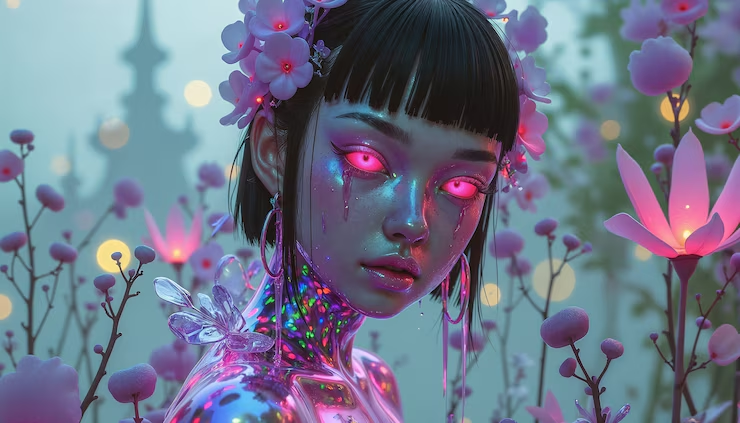
Artificial intelligence has already made a significant impact in various industries, and the art world is no exception. AI-generated art has been around for a few years now, but in 2025, we’re set to see even more innovative and impactful developments in this exciting field. From creating unique masterpieces to enhancing the creative process, AI art generators are becoming more sophisticated, accessible, and widely used. Let’s explore the trends to watch in 2025 that will shape the future of AI art generation.
The Evolution of AI Art Generators
AI art generators have come a long way in a short time. Initially, AI-generated art was seen as a novelty, but as the technology behind these tools improves, they are now being used by professionals and hobbyists alike. The AI art generator has become a powerful tool for artists, designers, and content creators who want to experiment with new forms of expression and expand their creative horizons.
In 2025, we will see these tools not only generate art but also enhance the way artists work. AI is being integrated into digital painting, animation, and even video production, making it a central part of the creative process. Artists will rely on AI to help brainstorm ideas, generate initial drafts, or even suggest improvements to their work. This marks the shift from AI as just a tool for producing art to AI as a collaborative partner in the creative journey.
1. Personalized AI Art
One of the most exciting trends in 2025 will be the increased ability to generate personalized AI art. Whether it’s a portrait of yourself in the style of a famous artist or a custom illustration that reflects your unique personality, AI art generators will be able to cater to individual preferences like never before.
Personalized AI art will allow users to provide input in the form of text descriptions, photos, or even specific style preferences. This means that anyone, from art collectors to everyday social media users, will be able to commission their own bespoke pieces of art generated by AI. This trend will blur the line between digital and traditional art forms, as AI-generated creations become more sophisticated and more in tune with human tastes and desires.
2. AI Art as an Educational Tool
As AI art generation continues to grow, educational institutions will begin to embrace it as a learning tool. In 2025, art schools and digital media programs will use AI to teach students about color theory, composition, and various artistic techniques. By experimenting with AI-generated art, students will have the opportunity to learn new approaches and gain a deeper understanding of the creative process.
AI art can also serve as an inspiration for artists looking to break through creative blocks. For those struggling to get started, an AI art generator can produce multiple variations of a concept, offering endless ideas and possibilities. This type of collaboration between human creativity and AI will open up new avenues for learning and development in the world of digital art.
3. Integration with Augmented Reality (AR) and Virtual Reality (VR)
Another exciting development we can expect to see by 2025 is the integration of AI-generated art with augmented reality (AR) and virtual reality (VR). These immersive technologies are already gaining popularity, and when combined with AI-generated art, they open up an entirely new realm of creative possibilities.
Imagine walking through a virtual museum where each piece of art is created on the fly by an AI art generator based on your preferences or current mood. Alternatively, with AR, you could hold up your phone and see a piece of AI-generated art come to life in your living room, or even interact with it in real-time. This seamless integration of AI, AR, and VR will redefine how we experience and engage with art in the digital age.
4. AI-Driven Art in Commercial Applications
The use of AI-generated art will extend beyond personal use and enter the commercial world in 2025. From advertising and product packaging to website design and branding, businesses will increasingly turn to AI for custom visuals that resonate with their target audience. The speed and efficiency of AI art generation make it an attractive option for businesses looking to create eye-catching, on-brand visuals quickly.
AI art generators will also be able to analyze market trends and customer preferences, tailoring visuals to specific demographics. For example, an AI art generator could create promotional art for a clothing brand based on current fashion trends or design a unique logo for a startup based on their business ethos. The possibilities are vast, and companies will be able to leverage AI to enhance their marketing and branding efforts.
5. Ethical Considerations and Copyright Issues
As AI art generation becomes more widespread, ethical questions and copyright issues will take center stage. In 2025, there will be a greater focus on the ownership of AI-generated art and how it fits into the broader legal landscape. Artists, developers, and legal experts will need to work together to establish guidelines that address concerns over authorship, originality, and the rights of AI in art creation.
One of the biggest challenges will be defining the role of the artist when AI is involved in the creation process. While AI can generate stunning art, it still requires human input to guide and direct the creative process. As this technology evolves, discussions about ownership and credit will become increasingly complex, and laws may need to adapt to ensure that creators are fairly compensated for their work.
Conclusion
The future of AI art generation in 2025 promises exciting new opportunities and challenges. From personalized AI art to immersive experiences with AR and VR, the possibilities for how AI can be integrated into the art world are endless. As AI art generators become more sophisticated and accessible, the lines between human creativity and artificial intelligence will continue to blur. The future of art is here, and it’s powered by AI.
By embracing AI tools and exploring these emerging trends, artists, educators, and businesses can stay ahead of the curve and make the most of the revolutionary changes coming to the art world. Whether you’re creating for personal enjoyment or as part of a larger commercial endeavor, AI-generated art will continue to shape the creative landscape in 2025 and beyond.





